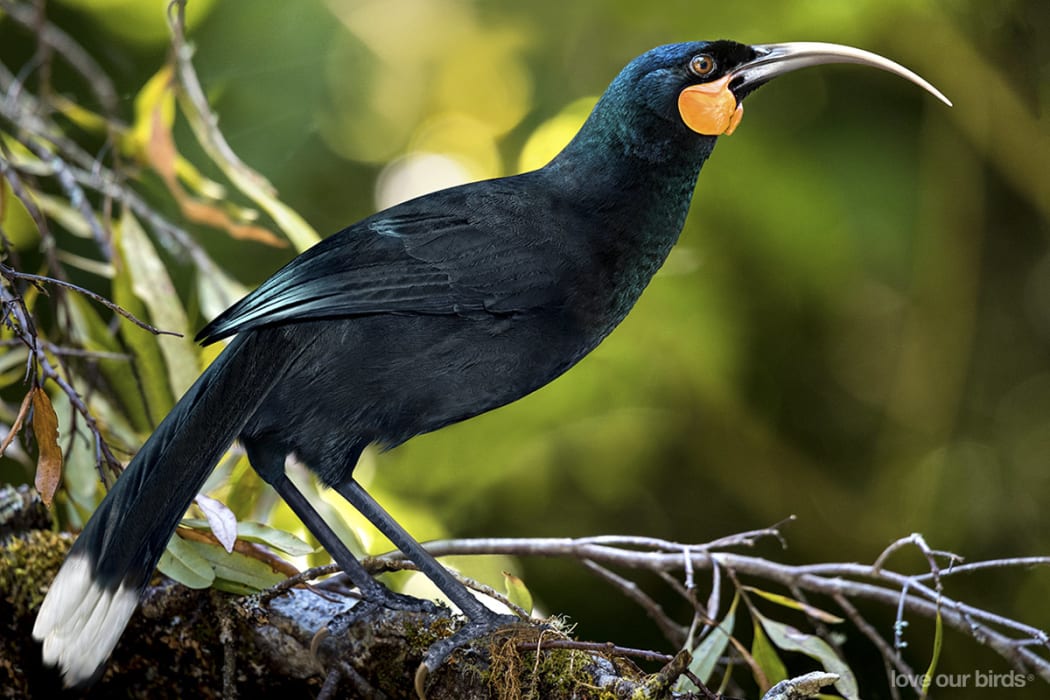
Artists' impression of a female huia Photo: John and Melody Anderson / Wayfarer Images
The de-extinction of animals has moved from science fiction to "science possibility" says Otago University zoologist Professor Phil Seddon.
New Zealand would be an ideal place to reintroduce extinct species, but there are significant risks and the issue raises many questions.
So why in New Zealand?
Because we’re forward-thinking in terms of conservation measures, are willing to take risks for good pay-off and… we’ve got a whole lot of extinct species, he says.
The idea is to bring back animals that could be useful when released into an ecosystem, Seddon says.
“The whole point of doing this for conservation benefit is not doing something that’s going to sit in a lab or a zoo or a paddock.”
One animal it would be useful to bring back to life is the woolly mammoth, he says.
The woolly mammoth’s habitat - a grasslands ecosystem known as the ’mammoth steppe’ – disappeared when they did. The grass-less tundra that arose in its absence now contributes to human-driven climate change as its permafrost melts and releases greenhouse gases.
The risks of de-extinction haven’t yet had a lot of attention, says Seddon.
Even the concept could devalue the conservation message, which is based on the idea that extinction is forever.
“If you change that perception in the public mind, people may get the impression that we’re not in a crisis and if we’re about to lose something that’ll be alright, we’ll just bring it back later when things are better.”
The unpredictable effects of reintroduction on other species, including humans, and the financial costs of managing de-extinct species are other risks.
“Worldwide, we’re struggling to manage the things we’ve got and stop them from going extinct” he says.
So which animals might we see back in New Zealand some day?
Likely not the moa, Seddon says, because there aren’t any near-relative species around that could act as surrogates.
A smaller species such as the huia would be a bit easier to bring back, but he’s not sure how close it would be to the original.
“Because you’re trying to recreate something from – in the case of a huia – a partial read of its DNA, you’re having to possibly fill in some of the gaps with your best guess from related species.”

